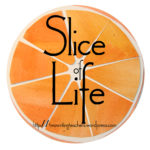SOL18: The Slice That Inspired a Slice
Posted on March 18th, 2018

“Green Reverse, Green 9, Green 5, Wild.” Confused, I scanned the next few lines. “Red 8, Red 2, Blue 2, Wild.”
Is this code? I wonder, and continue on down the page. Then I spot the word Uno.
Isn’t that a card game? If it is indeed a game, the word Uno must be good because it’s followed by an exclamation point. And Wild Blue 8 must be REALLY good because it merits a happy face. Could it be because the writer had the blue 8?
But then I come to “Crouch! Blind! Set!”
Hmmm….I’m thinking by now it must be a game being played. I could confirm my supposition by opening a new browser tab and pasting in the words. Oops…I see now that the title reads, “A Day of Games.”
That’s when it hits me.
I’m up in front of my second period Junior English, where we’ve just read one of Emily Dickinson’s poems.
“Miss, this doesn’t make any sense.”
I remind them it’s OK to look up any unfamiliar words.
“That doesn’t help! I know what the words mean, but I still don’t get it.”
By this point in the year, we’ve discussed how authors join larger, ongoing conversations with the world through their writing. As a reminder of that thought, we read together Dickinson’s poem “This is my letter to the world, That never wrote to me.”
“If this is one of Emily Dickinson’s letters to the world,” I ask, “what is she trying to tell us who never wrote to her?”
That’s when we begin the work of trying to understand the poem’s context, perspective, point of view, poetic techniques—skills that will help reveal the poem’s meaning. Hope flickers within me that they will remember to view literature they read as an author’s conversation with them. And being a conversation implies that the author expects a response from the reader.
So, even though it’s a only small slice of writing, I open my browser determined to understand the meaning of the words on the web page so that I can respond.
